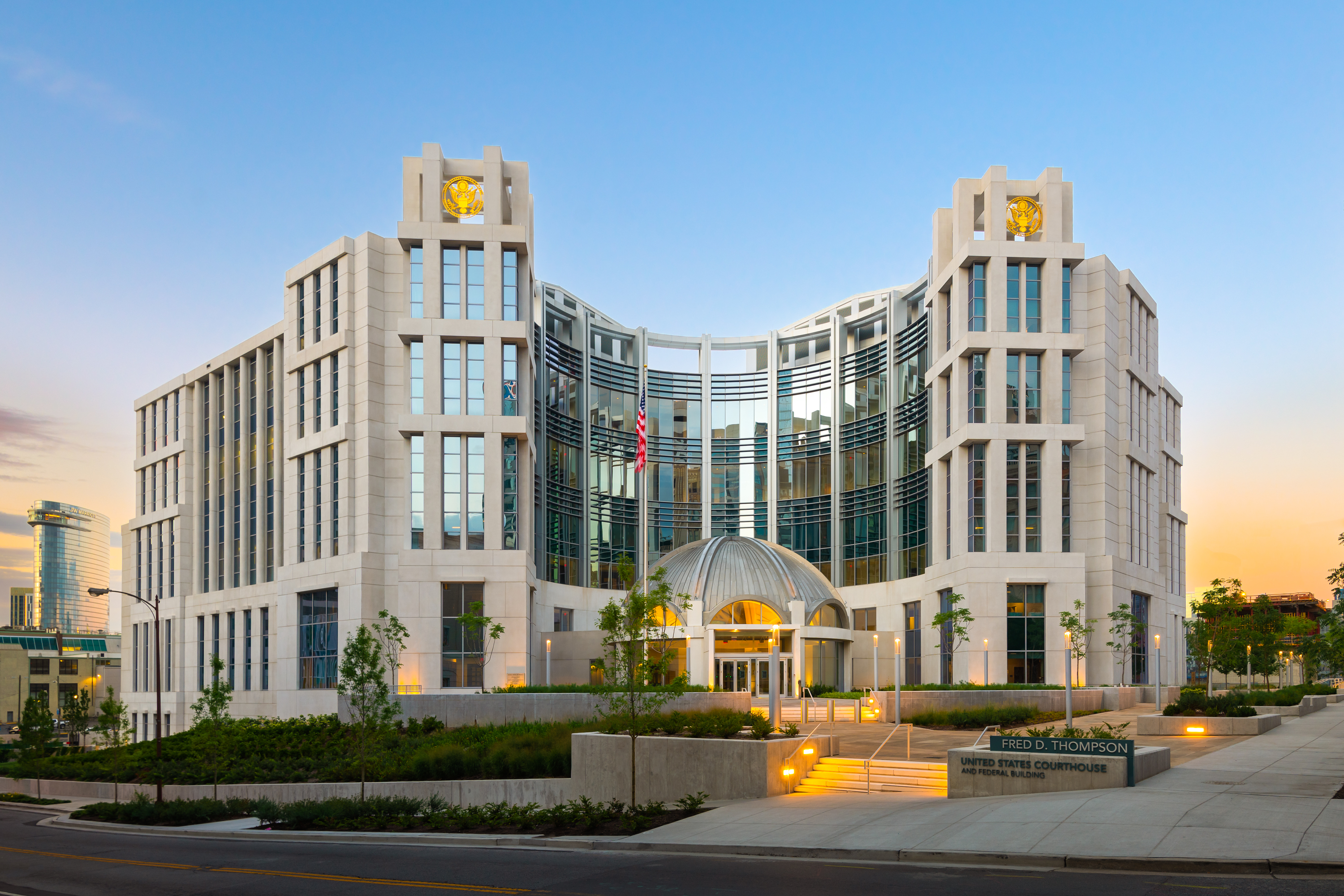What to Watch for in Abrego Garcia’s Hearing on Potential Pretrial Detention

Published by The Lawfare Institute
in Cooperation With

In March, the federal government acknowledged committing an “administrative error” that resulted in Kilmar Abrego Garcia’s erroneous removal from the United States to El Salvador. In April, the Supreme Court affirmed a federal district court’s order to “facilitate” Abrego Garcia’s release from El Salvadorian custody and directed the government to “ensure that his case [be] handled as it would have been had he not been improperly sent to El Salvador.” And in May—though only publicly unsealed last week—the government obtained an indictment from a grand jury in Nashville charging Abrego Garcia with unlawfully transporting noncitizens within the United States between 2016 and 2025. Although not an element of the offenses with which he is charged, the indictment also alleges that Abrego Garcia is a “member and associate of the transnational criminal organization, La Mara Salvatrucha,” more commonly known as MS-13. Evidence in the public record to support that allegation is slim.
Abrego Garcia appeared in court in Tennessee on June 6 to hear the charges against him. He will appear in court again tomorrow, June 13. Two things will happen. The magistrate judge will arraign Abrego Garcia, which consists of reading the indictment (though defendants, through their counsel, often waive the public reading) and directing Abrego Garcia to enter a plea. Barring something unexpected, Abrego Garcia will plead not guilty. Second, the magistrate judge will consider the government’s request to detain Abrego Garcia pending trial.
Federal pretrial detention often poses challenging questions, and that is particularly true here. The pretrial detention statute’s “default position” is that a criminal defendant should be “released pending trial.” To overcome that default and seek detention in a typical case, the government must clear two hurdles. First, it has to establish a legal basis for having a detention hearing in the first place. If successful at that step, the government must then persuade the judge that “no condition or combination of conditions will reasonably assure” the defendant’s appearance in the criminal proceedings and “the safety of any other person and the community.” Complicating the analysis in Abrego Garcia’s case is the possibility, if not likelihood, that he would remain in immigration detention however a court answers the pretrial detention questions.
The discussion below tries to unpack the detention issues in Abrego Garcia’s case before the hearing in front of a magistrate judge tomorrow. The aim is not to evaluate various substantive allegations the government makes in its detention pleadings about the evidence underlying the indictment or other claims about Garcia Abrego’s alleged connection to MS-13 or his conduct toward his family or others. (As noted below, Garcia Abrego doesn’t address those allegations either in his response.) It is instead to explain how the hearing is likely to proceed and how the parties have framed their arguments.
Brief Background on Pretrial Detention
When Congress passed the Bail Reform Act of 1984 (most relevantly codified at 18 U.S.C. § 3142), it allowed federal courts for the first time to detain criminal defendants pending trial on the fear that they might commit crimes awaiting trial. As the Supreme Court observed in 1987 when upholding the Bail Reform Act against a constitutional challenge, Congress sought to empower courts “to make release decisions that give appropriate recognition to the danger a person may pose to others if released.” At the same time, the Court reasoned, the Bail Reform Act “carefully limits the circumstances under which detention may be sought to the most serious of crimes.”
Section 3142 allows judges to order that a defendant be released—either “on personal recognizance” or with certain conditions—or be detained. It provides for a form of temporary detention that the government in Abrego Garcia’s case does not appear to seek but that may in fact apply (as discussed below). And it permits, where the government requests, a judge to detain a defendant indefinitely pending trial.
If the government seeks to have the defendant detained pending trial, it must first justify the legal basis for a detention hearing. The government—and at times, courts—sometimes will leapfrog this step, moving directly into whether the defendant should be detained. Indeed, the government’s first detention filing in Abrego Garcia’s case argued that he should be detained; only three days later did it file a supplemental memorandum laying out its position on why a detention hearing is merited. Section 3142 provides three avenues to getting a detention hearing: (1) the defendant is charged with at least one of certain serious crimes, § 3142(f)(1); (2) the defendant is a serious flight risk, § 3142(f)2)(A); or (3) there is a serious risk the defendant will in fact or attempt to “obstruct justice, or threaten, injure, or intimidate a prospective witness or juror,” § 3142(f)(2)(B).
If the government persuades the court that a detention hearing is warranted, the question becomes whether any conditions short of detention will “reasonably assure” the defendant’s appearance and the community’s safety. (When a defendant is charged with certain very serious offenses, the Bail Reform Act imposes a rebuttable presumption that the defendant should be detained. That presumption doesn’t come into play here.) Any finding that no conditions suffice, and that pretrial detention is therefore required, must be supported by “clear and convincing evidence.” The statute lists several factors the court must consider when deciding that question: the nature and circumstances of the offense charged, the weight of the evidence, the defendant’s history and characteristics, and the nature and seriousness of any danger that would result from releasing the defendant.
Legal Basis for a Detention Hearing
Abrego Garcia’s response to the government’s detention motion focuses entirely on whether the government has established a legal basis to even hold a detention hearing in the first place. That approach suggests that the action may be in whether any detention hearing at all is appropriate, not on whether detention is warranted should such a hearing take place.
The government—in its supplemental memorandum—advances three arguments for why a detention hearing should take place. Each is plausible, but no single one is compelling.
First, the government claims that Garcia Abrego’s charged offense “involves a minor victim.” That is unquestionably a basis for a detention hearing under § 3142(f)(1)(E). But far more questionable is whether the argument applies here. The indictment charges Abrego Garcia with a conspiracy and a substantive violation of transporting noncitizens within the United States. Nothing in the elements of those offenses requires the government to prove that Abrego Garcia transported minors—although the indictment alleges that he and other conspirators “transported children on the floorboards of vehicles to maximize profits.” Relying on Supreme Court and binding circuit precedent, Abrego Garcia argues that “involves” in the Bail Reform Act means “requires”—it is a nontrivial but not obviously correct position—and if he’s right, then the government’s first path to a detention hearing is closed. But even if “involves” is more broadly construed, it’s not clear that the offenses involved minor victims, if those children—or their guardians—willingly sought their transportation. (The government cites a nonbinding case in the sentencing context to argue otherwise.)
Second, the government says a detention hearing should occur because Abrego Garcia would be a flight risk if released. For one thing, it’s not clear that Abrego Garcia would even have the opportunity to flee if released from criminal pretrial detention because he may well simply end up in immigration detention. As the government acknowledges, if the court denies its pretrial detention motion, Abrego Garcia will “likely be placed in the custody of Immigration and Customs enforcement pending further proceedings in immigration court.” That alone probably dooms the government’s flight-risk argument. Even were that not true, however, the government’s flight-risk contention consists basically of the claims that Abrego Garcia faces a long sentence, that a conviction would jeopardize his opportunity to remain in the country, and that he “has been used to living in the shadows.” Abrego Garcia quibbles with each of those assertions.
Finally, the government argues for a detention hearing on the basis that Abrego Garcia’s release poses a serious risk of obstruction or witness intimidation. The government does not rely on specific facts about Abrego Garcia as much as it relies on his “membership in and association with MS-13,” an organization “with an unequivocal and extensive history for violence, intimidation, and obstruction.” Abrego Garcia “denies the government’s baseless gang-affiliation allegations” but also claims that the government has failed to identify any specific threats that Abrego Garcia has made against any witnesses or any obstructive conduct in which he has engaged. The magistrate judge presiding over the hearing will have to decide how much evidence to hear on MS-13 generally and Abrego Garcia’s association, if any, with the gang. She will also face challenging questions on whether to attribute the gang’s notoriously violent ways to Abrego Garcia based on whatever evidence the government provides.
Whether Detention is Warranted
Unless the government succeeds in establishing that a detention hearing is warranted, the detention “hearing” will end before it begins. That appears to be Abrego Garcia’s primary strategy. Beyond arguing that no detention hearing is warranted, his response to the government’s motions offers no explanation for why, if the court does consider whether any conditions of release would reasonably assure his appearance and the community’s safety, he should be permitted to remain out of custody.
It is a risky strategy for Abrego Garcia. The government’s initial motion for detention lays out over twelve pages the evidence supporting Abrego Garcia’s alleged transportation of noncitizens in November 2022, his alleged participation in a murder to gain admission into MS-13, his alleged violence toward his family, and his alleged solicitation of nude photographs and videos from a minor. The government’s motion doesn’t explain how it would prove these allegations at a detention hearing, though the rules of evidence—which, for example, exclude many types of hearsay—don’t apply. Abrego Garcia doesn’t respond to any of these allegations, and it may be that he asks the magistrate judge to continue any consideration of the factors that bear on detention if the judge disagrees with Abrego Garcia’s topline contention that no detention hearing is appropriate at all. But he may equally find himself on the defensive in a detention hearing, left to cross-examine any witnesses the government calls. (The court ordered the government to provide any relevant discovery and the parties to make witness disclosures by noon today, June 12, the day before the hearing.)
Immigration Complications
Also looming over the pretrial detention issue in this case is Abrego Garcia’s immigration status. Section 3142(d) directs the court to impose temporary detention where a defendant “is not a citizen” or “lawfully admitted for permanent residence” under the Immigration and Nationality Act. The government has not invoked that provision, despite acknowledging that Abrego Garcia is likely to face immigration detention even if he is not placed in pretrial detention. Perhaps that is because the government has concluded that § 3142(d) does not apply. Or perhaps, more cynically, the government sought to use its detention-related filings—whether ultimately successful or not in securing Abrego Garcia’s pretrial detention—to construct a narrative of Abrego Garcia as a dangerous and violent gang member for political purposes.
Wherever the truth lies, it is peculiar that the government has spilled so much ink—two separate motions totaling nearly 30 pages—seeking the pretrial detention of someone who apparently would remain in immigration detention whatever the magistrate judge decides. It is also peculiar that Abrego Garcia himself does not, in his opposition to the government’s detention pleadings, acknowledge that he is not likely to be free from custody even if he prevails in his fight against pretrial detention. The parties may largely ignore Abrego Garcia’s immigration status, but the magistrate judge probably won’t. She may well conclude that § 3142(d) applies, which places the onus on immigration authorities to determine his custodial status.
If the court takes that step, however, it seems at least possible that federal immigration authorities could remove him from the United States, albeit not to El Salvador, as Abrego Garcia has a withholding of removal that prevents the government from sending him there. Counterintuitively, perhaps, if Abrego Garcia’s primary focus is trying to remain in the United States, his safest bet could be pretrial criminal detention.



.jpg?sfvrsn=8253205e_5)

